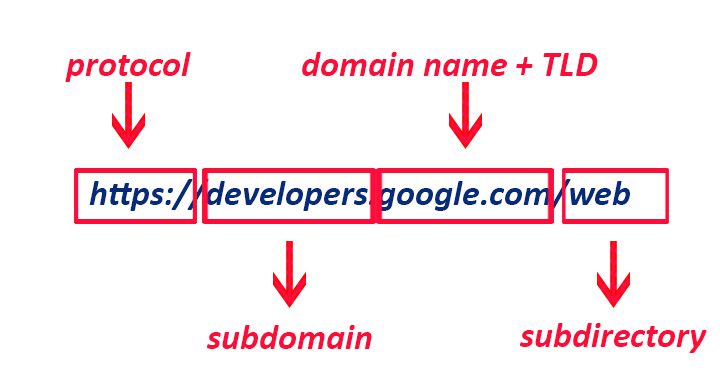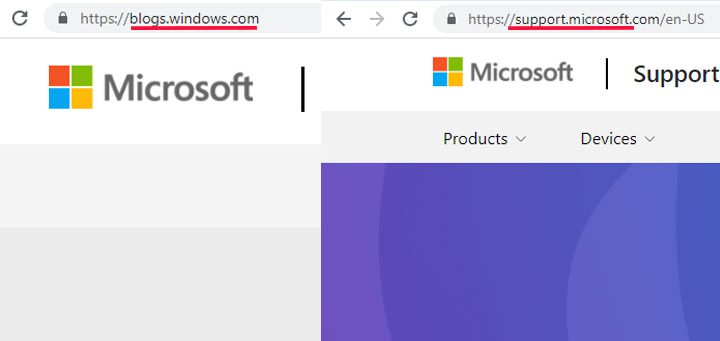Subdomain vs Subdirectory: Which Is More SEO-friendly?
 Subdomain vs subdirectory is one of the oldest debates in the world of SEO practitioners. Solid arguments are in favor of each part. Research of many SEO experts doesn’t provide a clear answer and there is no sign that the dispute is over.
Subdomain vs subdirectory is one of the oldest debates in the world of SEO practitioners. Solid arguments are in favor of each part. Research of many SEO experts doesn’t provide a clear answer and there is no sign that the dispute is over.
The dilemma of subdomain vs subdirectory is crucial for the success of a website, so the harsh disputes of the SEO experts are understandable. The structure of a website is similar to the plan of a building. You can’t build a solid home with a bad plan. The same applies to websites—you can’t build one with an improper structure.
Is another article discussing this problem really necessary? How is this article different from the rest of the articles dealing with this matter? Well, it differs because we did our best to present the pros and cons of each structure. Besides, we show you suggestive use cases where subdomain or subdirectory works the best. Neither subdomain nor subdirectory is better—it all depends on the type of the project!
The Anatomy of an URL
A subdomain is an extension of the primary domain. A subdirectory, also called a subfolder, is a convenient way of adding sections and web pages to a domain. This explanation doesn’t make sense unless you know the anatomy of a Uniform Resource Locator (URL), the text of the website address you type into the browser bar. Let’s dissect the address of the Google Developers for Web; check out this address – https://developers.google.com/web to better understand what a subdomain is.

https:// – the protocol; HTTPS stands for Hypertext Transfer Protocol Secure, which is the mechanism used on the Internet for exchanging files.
developers – the subdomain; it’s connected to the primary domain and it always stays before (in the left part) the domain name.
google – the domain name.
.com – top-level domain; in addition to the domain name is practically the “name” of your business.
web – a subfolder/subdirectory; the web pages and sections of a website are stored in folders, similar to how you keep your files in folders on your computer. The subfolders are always after (in the right part) the domain name.
Briefly, the structure of a subdomain is subdomain/domain.com, and the structure of a subdirectory is domain.com/subfolder.
What Is a Subdomain?
A subdomain is a partition of a website, closely related to the root domain. These are separate entities and the subdomain may run on a different content management system. A different server may host the subdomain. Complex online businesses go for subdomains to make the branches distinguishable. For instance, Microsoft clearly delimitates its activities. The support and blog sections are related to Microsoft but are different entities. A subdomain works better in these cases. As a result, the support section and the blog run on subdomains—https://support.microsoft.com/ and https://blogs.windows.com/.

Configuring a subdomain is considerably more difficult than using a subfolder. Yet, it’s a working solution to run a section of your website on a different setup.
What Is a Subfolder?
Subfolders are a more casual way of keeping site files. If you didn’t care about the subdomain vs subfolders dilemma, then you went for subfolders. Unlike subdomains, subfolders certainly share the same resources with the domain root. The entire SEO community agrees that a subfolder shares the link juice with the root domain. It simplifies the optimization of sites based on subfolders; there is no need for different SEO strategies for root domains and subdomains.
Subfolders aren’t used only by small websites. For example, Microsoft uses subfolders to present the Windows products: https://www.microsoft.com/ro-ro/windows/windows-11.
In this example, window is the name of the subfolder and windows-11 is the page accessed.
Subdomains vs Subfolders
The first major difference is that subdomains may run on different server configurations. It’s a good choice for online stores running on a different platform than the root domain. For example, your business website runs on WordPress, while the shop is on Shopify. These are separate entities from the management perspective but are strongly connected in the eyes of the end-user.
Another substantial difference between subdomains and subfolders is the management of large sites. Keep in mind that there is no set-in-stone rule; both alternatives are okay. However, subdomains are better suited for large sites as it allows for separate entities in a convenient way. Neither subfolders nor subdomains are wrong, but too many subfolders can complicate the handling of web pages. A winning strategy is the usage of both subdomains and subfolders.
Finally, it’s about the SEO perspective. Some experts consider that Google treats the subdomains as separate entities even in the ranking algorithms. Others deny this fact. That’s the subdomain vs subfolders dilemma.
Subdomains vs Subfolders Dilemma
The harsh debate relies on the SEO effects of using subdomains or subfolders. Are subdomains or subfolders better for a website ranking? The opinions of SEO experts are divergent.
The first group considers that Google treats subdomains as separate entities, meaning a subdomain has a different ranking than the root domains. This implies that the subdomain and the root domain should have separate SEO strategies. More or less, from an SEO and marketing perspective, you operate with two standalone websites.
The second group states that subdomains and subfolders are basically the same for Google. It’s almost irrelevant to Google if you go for subdomains or subdirectories. John Mueller, the Senior Webmaster Trends Analyst at Google, has a clear answer to the subdomain vs subdirectory dilemma.

He states that “Google Search is fine with using either subdomains or subdirectories” in a YouTube video uploaded on the Google Search Central channel. He recommends using a site structure that can be used for a longer period. In addition, he said that “we do have to learn how to crawl subdomains separately, but for the most part, that’s just a formality for the first few days.”
Despite the calming piece of advice from John Mueller, the debates keep on. Some studies made by serious SEO experts reveal that, in fact, subdomains confuse search engine spiders. As a result, a subdomain dilutes your SEO efforts. It’s a conclusion showcased by the charismatic Rand Fishkin and many other well-known SEO experts.

He noticed that some websites that moved the blog from a subdomain to a subfolder saw a sudden boost in organic traffic.
Subdomain vs Subdirectory — Our Take on It
We strongly believe that Google and other search engines focus on providing the perfect experience to the searcher. Simply put, user-friendly is the new SEO-friendly! Search engines refine the algorithms and use artificial intelligence to rank websites. In this context, cheating search engine spiders is a near-impossible mission. You need to play by their rules to get the first position in the search results.
As long as search engines do everything possible to please their customers, you should do the same. Your site structure and content are for customers, not for search engines. Make user satisfaction your number one priority because Google treats your site depending on how you treat user satisfaction. Are the users interested in visiting only sites based on subdomains or subfolders? Nope, they want the needed information as fast and simple as possible. So, subdomain vs subfolder is a problem with almost no importance for them. You shouldn’t pay too much attention to this issue either.
Supposing that subdomains or subfolders are even ranking factors, their influence should be extremely low. The content quality and the user experience weigh in incomparably more. We believe that neither subdomains nor subdirectories are more SEO-friendly. Other factors are more important and you should concentrate your efforts on them. Content quality, user experience, backlinks, site performance, and time on site are capital ranking factors for better search positions.
Subdomains and subfolders are more relevant for the site structure than for SEO. Subdomains work great in some cases and you shouldn’t disregard this fact. In the end, it all depends on the particularity of the website. The following types of projects cater to subdomains.
Sites with Support Section
Using subdomains is a perfect choice if your business has a reasonably big support section. In fact, even Google uses subdomains to keep its support section. This ensures that long FAQs or your documentation won’t bother the main site visitors. Yet, support is only a click away if they face a problem.
Sites with International Audience
Translating your content is one of the best methods for getting more organic traffic. It sounds strange, but it makes sense. Ranking in the first position for many English keywords takes a lot of time and resources. The equivalent keyword in the Spanish language is considerably easy to rank high. In this context, it’s a smart idea to create subdomains targeting different languages. Using subdomains helps you have a clear understanding of the growth for each particular language. Besides, some projects might need the subdomains to work on a different hosting setup. It’s worth mentioning that subdirectories don’t allow this option.
Sites Featuring Different Content
Nowadays, online courses and ebooks are the most common ways of self-sharpening your skills. Creating courses and ebooks are a legit way for a successful business to share their recipe for success. Other businesses impress with transparency reports, a great method of showing their own ups and downs to their customers. People eagerly consume podcasts, so why not jump the bandwagon and start podcasting?
All the above situations fit for using subdomains. Your main website has a specific purpose, so a subdomain is perfect for an adjacent topic. The subfolder structure works for all these scenarios, too. However, subdomains keep things separate, allowing you granular control.
Ecommerce Sites
A structure based on subdomains is a working solution for particular eCommerce sites. Take the example of the famous electronic musician Tiesto. His website features his latest hits and upcoming tour dates—these are the main reasons fans visit his website. However, the merchandise industry has exploded in the last few years. As a result, Tiesto’s fans can also purchase their favorite products directly from Tiesto’s shop. As you guessed, the shop runs on a subdomain.

A subdomain is the simplest way to sell products while keeping the focus on the primary domain. If you’re selling a few products, but your website’s main purpose isn’t eCommerce, a subdomain is a good approach.
Over to You on Subdomain vs Subdirectory
The dilemma of subdomain versus subdirectory is far from answered. Well-known SEO experts offer arguments for both sides. Perhaps Google and other search engines representatives should offer more details to shed some light on this problem.
Don’t worry if you are unsure which solution is more SEO-friendly; you are not the only one! It’s more valuable for your business to focus on providing the users with the best ever experience. A faster loading site, great user experience, other sites mentioning you as a trusty source, and backlinks from authoritative sites matter more for your SEO ranking.
Don’t avoid subdomains—they can be pretty effective in particular situations. Big companies and heavy-visited websites use them, so you shouldn’t question the subdomains’ utility. Some websites have the blog configured on a subdomain. It’s not necessarily bad, but you waste link juice supposing that subdirectories are more SEO friendly. Unlike online stores, a blog is a great source of authority and organic traffic. Practically, you lose time and energy by setting up the blog on a subdomain. This is one of the reasons that convinced us to not suggest keeping the blog on a subdomain. I underline that all these are valid only if a subdirectory structure is more SEO-friendly.
Instead of presenting a long debate on subdomain vs subdirectory, we propose a pragmatic approach—use subdomains only in particular cases. Subdomains clearly have their value if big companies and websites use them.





